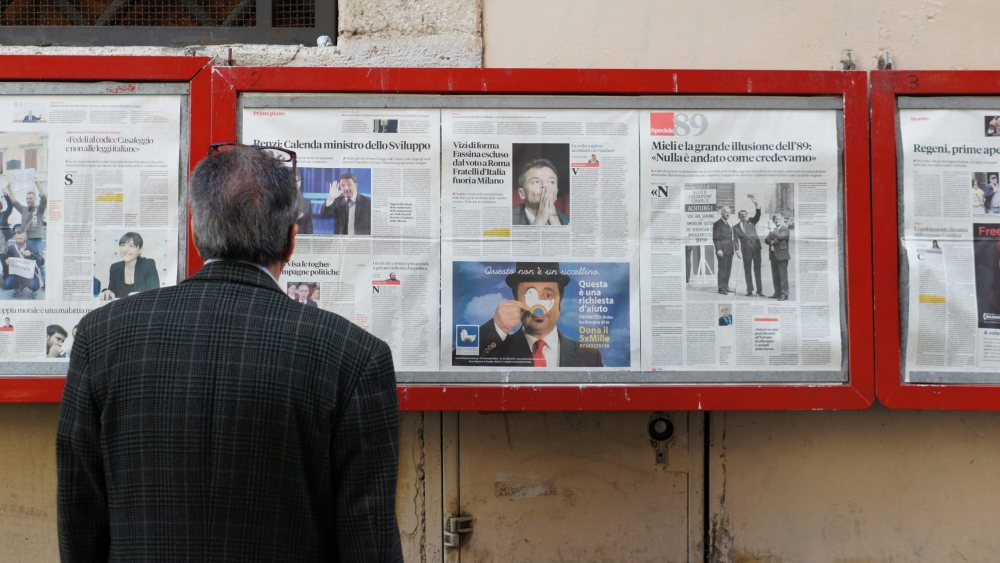Less than a week after Facebook banned Australian news from appearing on its platform, it reached a deal with the Australian government on amending a misguided legislation that would make social networks and Google pay for the news they feature.
The volte face wasn’t in the least bit surprising. News is an essential service, and without it, in 2020, more people would have likely died—in the fires that ravaged Australia and California— and of Covid-19. In China, where state media tried to suppress negative information around the Covid-19 outbreak in Wuhan, the world turned to citizen journalists who circumvented the “great firewall of China” to put out videos on YouTube that better represented reality.
On the social justice side, following the deaths of Ahmaud Arbery, George Floyd and Breonna Taylor, Black Lives Matter gained more visibility worldwide because the media didn’t “stand down”. The coverage trickled down closer home where in South Asia some of the world’s biggest brands had to respond to criticism of colourism by dropping the word “fair” and “fairness” from their products.
In politics, protests in Hong Kong, India and Myanmar, reached fever pitch, because credible local and international news organisations pursued these stories relentlessly. And despite pay cuts, job losses, and work from home orders, we saw some of the best investigative reporting emerge, including revelations related to long-concealed records of Donald Trump’s tax filings, and the Financial Times’ exposé of Wirecard’s fraudulent accounting practices.
The media has had to innovate—or die
While it’s clear that news isn’t a dispensable commodity—today’s changing media landscape and the rise of Google, Facebook and Twitter, have meant that organisations have had to transform at lightning speed to reflect the world’s digital present.
To do this, businesses have broadly adopted one of the following models: hard paywalls, freemium services, and a combination of membership and contributions, with the goal of getting as many people to spend more time on their content.
This has meant focusing on the customer experience of reading, watching and listening, as much as on compelling journalism itself. To do this well, media companies have had to embrace data and analytics to create the type of content that resonates with their audiences. And often in doing that, they discover readers’ habits and needs have changed, leading to entirely new strategies to attract and retain subscribers.
This is what prompted the New York Times to introduce audio shows in 2017, following the success of its election-focused podcast a year earlier. As of September 2020, The Daily, crossed two billion downloads, and won a Murrow award for five episodes on China’s crackdown on Uighur Muslims. Now, the audio team has introduced multiple new shows, formats and a weekend audio experience to add to its already remarkable roster of audio content.
Sadly, not every media organisation has been able to make the digital leap. In recent years, thousands of local newspapers and magazines around the world have been forced to shut down. In Australia alone, more than 150 newsrooms shut between January 2019 and May 2020, deepening an already existing media crisis. In the United States, the loss of local newspapers has left millions of Americans without a vital source of local news, a 2019 study by the Brookings Institute found. Strikingly, as Americans were forced to shift away from local news, turnout in state and local elections fell, and communities that have lost reporters have seen fewer candidates run for local office, the same study showed.
Journalism remains under threat
For the news media that survive, the pursuit of truth comes with other challenges—not the least of which is declining trust.
In the wake of COVID-19, the elections in the US, wide-scale disinformation campaigns, and a growing threat to democracies everywhere—the world saw a steep decline in trust of nearly all institutions and spokespeople. According to this year’s Edelman Trust Barometer (Disclaimer: they’re a competitor), trust in all media—traditional, social and search, and owned media—is at record lows. Alarmingly, traditional media has had the steepest annual decline of any media source in nearly a decade, with six in 10 people saying, “journalists are purposely trying to mislead by saying things that they know are false or grossly exaggerated”. Equally, respondents of the study believe that news organisations are putting ideology or political position above informing the public about what is happening in the world.
Some of this damage to credibility can be attributed to the anti-media rhetoric from world leaders like Donald Trump who regularly decried accurate, evidence-based stories as “fake news”. In less mature democracies and authoritarian states, governments are taking a more heavy-handed—and oftentimes violent approach to discredit journalists.
Equally to blame is the staggering rise of fake news itself. A recent study from Pew Research Center found that in mid-March 2020, 48% of Americans felt exposed to made-up news related to the pandemic, a figure that would rise to 64% a month later.
Given the environment, it’s plain to see why press freedom around the world is in free fall.
Some skepticism in the fourth estate is good, but now more than ever, we need a free and fair press to tell important stories and cover news and events as impartially as possible. Because the alternative is too troubling to consider.
Feel the same way about the state of news in current times? Share your thoughts with us at [email protected].
This article first appeared in PR Week.

